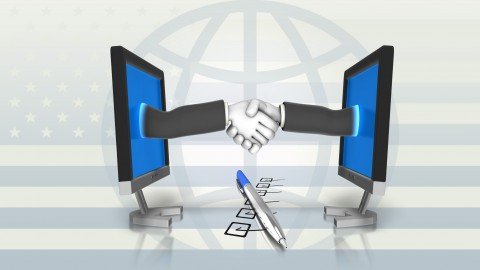
Last updated 8/2021
MP4 | Video: h264, 1280x720 | Audio: AAC, 44.1 KHz
Language: English | Size: 282.43 MB | Duration: 1h 18m
Use 4 Simple Rules to Improve the Quality of IT Requirements for Classic and Waterfall Software Development Approaches
What you'll learn
Write requirements that focus on the business need
Test the relevance of each requirement to ensure that it is in scope for your project
Create and maintain a question file to reduce the impact of incorrect assumptions
Minimize the risk of scope creep caused by missed requirements
Confirm that each audience shares a common understanding of the requirements
Use our Peer Perception technique to find ambiguous words and phrases that can lead to misunderstandings
Apply 3 simple rules to create technology-independent, component-focused requirements
Reduce the ambiguity of a statement by adding context and using standard terms and phrases
Requirements
No technical background required
Need or desire to define user requirements, features, user stories, etc.
Interest in finding more efficient ways to communicate business needs to the development community
HTML5 compatible browser for exercises
No additional materials are required
Description
Effective Requirements Reduce Project FailuresWriting requirements is one of the core competencies for anyone in an organization responsible for defining future Information Technology (IT) applications. However, nearly every independently executed root-cause analysis of IT project problems and failures in the past half-century have identified "misunderstood or incomplete requirements" as the primary cause. This has made writing requirements the bane of many projects.The real problem is the subtle differences between "understanding" someone else's requirement and "sharing a common understanding" with the author."Writing IT Requirements for Traditional Methodologies" gives you a set of 4 simple rules that will make your requirement statements more easily understood by all target audiences on traditional (aka "Waterfall") projects. The focus is to increase the "common understanding" between the author of a requirement and the solution providers (e.g., in-house or outsourced IT designers, developers, analysts, and vendors).The rules we present in this book will reduce the failure rate of projects suffering from poor requirements. Regardless of your job title or role, if you are tasked with communicating your future needs to others, this course is for you.(DISCAIMER: This course does not cover User Stories)How to Get the Most Out of this Course?To maximize the learning effect, you will have optional, online exercises to assess your understanding of each presented technique. Lessons prefaced with the phrase "Exercise" contain an exercise that we have prepared to give you an opportunity to try the presented technique yourself.These exercises are optional and they do not "test" your knowledge in the conventional sense. Their purpose is to demonstrate the use of the technique more real-life than our explanations can supply. We hope you enjoy them and that they make it easier for you to apply the techniques in real life.
Overview
Section 1: Setting the Stage for Writing Effective Requirements
Lecture 1 Welcome to the Course
Lecture 2 Why Do You Need Better Requirements?
Lecture 3 Managing Uncertainty
Lecture 4 The "Real" Problem with Requirements
Section 2: Capturing Requirements
Lecture 5 Follow the KISS concept
Lecture 6 Define the Business Need
Section 3: Requirements and Project Scope
Lecture 7 Keep Your Requirements in Scope
Lecture 8 Combat Scope Creep from the Start
Lecture 9 Recap of Rules One through Three
Section 4: Finding and Fixing Ambiguous Requirements
Lecture 10 Ambiguity Is Our Worst Enemy
Lecture 11 The Challenge to Understanding
Lecture 12 Use Peer Reviews to Increase Understandability
Lecture 13 Combatting the Major Cause of Project Failure
Section 5: Best Practices for Improving the Understandability of Your Requirements
Lecture 14 Use Acronyms and Corporate Standards
Lecture 15 Add Context to Eliminate Ambiguity
Lecture 16 Write to the Readability Level of Your Audience
Lecture 17 Recap of Rule 4
Section 6: In Closing
Lecture 18 Claim Your Job Aid
Lecture 19 Bonus Lecture: Special Offers
Subject Matter Experts,Product Owners,Business Process Managers,Business Process Users,Product and Project Managers,Line Managers,Business Analysts,Anyone wearing the Business Analysis (BA) hat!
Homepage
https://www.udemy.com/course/writing-software-requirements-it-projects/Fikper
bosnf.Writing.It.Requirements.For.Traditional.Methodologies.rar.html
Rapidgator
bosnf.Writing.It.Requirements.For.Traditional.Methodologies.rar.html
Uploadgig
bosnf.Writing.It.Requirements.For.Traditional.Methodologies.rar
NitroFlare
bosnf.Writing.It.Requirements.For.Traditional.Methodologies.rar

